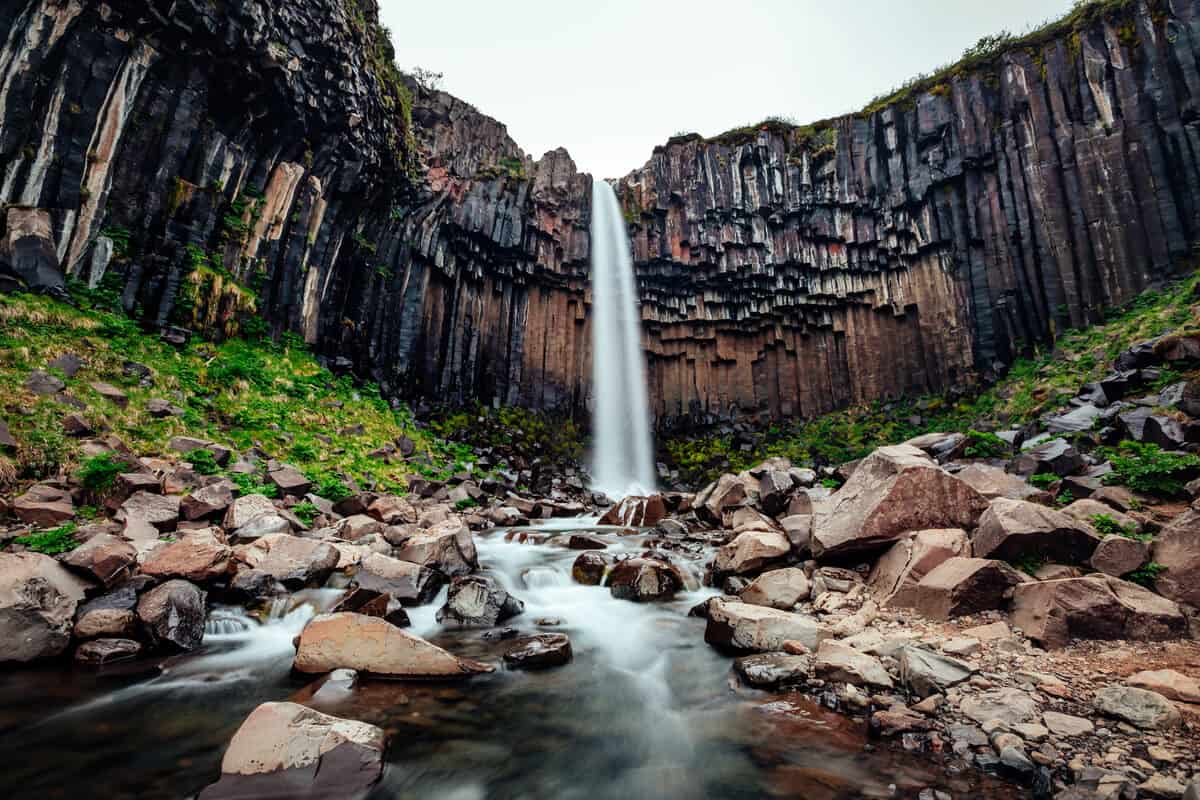

Allow 30 min to 1 hour return to truly experience this area. The trail is mostly flat and well-marked. However, without hiking it entirely, you can already find a few breathtaking waterfalls and cross gorgeous landscapes within a couple of kilometres. Along this 25km long trail, there are more than 25 waterfalls. It is worth going up if you can, for a vantage point of the fall but also the valley.įrom this lookout also starts the Fimmvörðuháls hike to Þórsmörk. It is a truly picturesque place to hang out and enjoy the power of nature.īefore reaching the waterfall, there are stairs (a bit wobbly and steep, so take extra care) leading to a viewpoint above Skogafoss. On sunny days, you can also see one or two rainbows forming at its bottom. Wide and powerful, it offers incredible photo opportunities to those who like playing with perspectives and water reflection. Skogafoss is our one of our favourite waterfalls on the South Coast of Iceland. Join a full-day tour to walk behind the waterfall at Seljalandsfoss and visit the south coast Meaning: Selajandsfoss means “selling the land of waterfalls” You might even witness northern lights right above it! Although, it is still worth visiting on short winter days. In winter the path behind Seljalandsfoss is usually closed because of the icy condition making it too dangerous. Also, you will surely get wet, but what would be a visit to a waterfall in Iceland without ending up soaked?! The path is large and flat for the most part but if you want to walk behind the waterfall, be aware the trail gets muddy and you will need to climb through wet rocks on the left side. The waterfall is easily accessible by car or with a tour. Try visiting for sunset if you can, depending on the season, you can see the sun through the waterfall when you are behind it (usually in April/May & July/August). You can visit the waterfall any time of the day but it can get very busy with tour buses from mid-morning to mid-afternoon. This giant waterfall is extremely popular and one of the tourists’ favourites for its size and the fact you can walk behind it! Despite not being a typical stop of the Golden Circle, most tours add the waterfall to their itinerary. The water stream is so tall, 60 metres high, it can be seen from the ring road. Seljalandsfoss waterfall is found on the south coast of Iceland, about 90 min drive from Reykjavik. Take a tour to see Gullfoss, the Golden Circle and Kerid Crater


Meaning: Gullfoss means the “Golden falls”. Be extra careful because the wet rocks can be unsafe. From the multiple viewpoints accessible from the car park, you can see all the different stages of the fall.ĭue to its power, the waterfall is always covered by a lot of mist and droplets which fill the canyon with rainbows when the sun is shining! One of the best places to see them is the rocky platform that is the closest to the river. Gulfoss waterfall is also remarkable for its shape as it first drops by 11 meters through a sort of large staircase before plunging into a 20-meter high crevasse to finally disappear into a canyon. Fed by the mighty Hvita river which begins at the Hvítárvatn glacier, Gulfoss is very impressive due to its size and strength – especially in Summer, when the glacier upstream is melting. Take a tour from Reykjavik: Golden Circle and Waterfalls Small-Group TourĪlso located on the Golden Circle Route, Gullfoss is one of the most popular waterfalls in Iceland. Meaning: Oxararfoss means the “Axe falls”. You can see the place on your way to the visitor centre & viewpoint (south of the park). There is also a large pool that was used during the 17th century for punishment (women were drowned and men were beheaded). Be mindful closer to the waterfall as the wood may be a bit slippery.Ī little bit downstream of the river, there is a nice waterfall you can see from the trails below. It is only a 5 to 10 min walk from the car park (depending on which one you stopped at) and easily accessible through a nice boardwalk. The waterfall is one of the main things to see while visiting Thingvellir National Park. It is believed the river Oxara was diverted into the rift about 1000 AD to sustain in water the people flocking to the park for the Alping (yearly assembly of regional chieftains). Located within the Thingvellir National Park, the 20m high waterfall jumps off the Almannagja canyon on the west side of the Mid-Atlantic rift ridge. First on our list is Oxararfoss waterfall because it is the closest to Reykjavik and one of the first stops on the popular Golden Circle route.


 0 kommentar(er)
0 kommentar(er)
